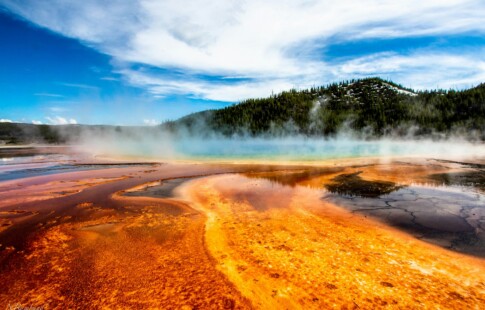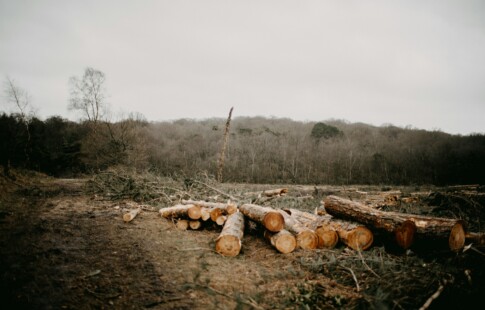
Mountaintop Removal Mining’s Environmental Impact in Appalachia
We are reader-supported. When you buy through links on our site, we may earn affiliate commission.
Mountaintop removal mining environmental impacts hit the hardest in the Appalachian mountains. Everything from explosives to fossil fuels powering machinery forever alters waterways and poisons wildlife beyond repair.
For decades, Appalachian residents have seen their precious mountains get shorter and shorter — not just from natural erosion but from corporate greed and a desperate attempt to cling to fossil fuels instead of embracing cleaner energy. Discover why mountaintop removal is one of the most harmful forms of mining to the environment and the people living around the destruction.
Where Is Mountaintop Removal Mining’s Environmental Impact?
Mountaintop removal mining is one of the most intensive forms of mining on the planet. Miners go to mountaintops for coal, stripping the tips with explosive and other environmentally invasive methods. Mining enterprises find a coal seam and start clearing the area with massive machinery, tearing up countless flora and displacing other wildlife.
This cursory step allows miners to create deep holes to place explosives, blasting thousands of feet of rock off mountaintops into forests and waterways below. The region it impacts most is the Appalachian Mountains in the eastern U.S., appropriately dubbed “coal country.”
According to the Appalachian Regional Commission, there are 13 states home to the mountain range home to several Native American tribes, including:
- Alabama
- Georgia
- Kentucky
- Maryland
- Mississippi
- New York
- North Carolina
- Ohio
- Pennsylvania
- South Carolina
- Tennessee
- Virginia
- West Virginia
West Virginia is the only state on the list entirely within the Appalachian mountains, making it one of the most notable subjects for mountaintop removal research. Appalachia is abundant in the resource, influencing decisions for governments and corporations alike.
The Motivations Behind Mountaintop Removal
Mountaintop removal mining environmental impacts should be enough to dissuade all bodies of power from undergoing the operation. However, corporations and politicians are incentivized to do so by creating jobs that extract the materials en masse.
The argument is that it provides economic well-being to low-income communities in rural areas. Still, the human health and environmental impact of the practice far outweighs potentially convincing benefits. Therefore, mountaintop removal continues because it manipulates citizens into believing they would otherwise be without a paycheck — it is what they have been told by employers and representatives for decades. In reality, their paycheck is a meager price to pay, given the environmental side effects.
The byproducts of ruining these regions and digging wells for explosives include water and air pollution, alongside raising the susceptibility of communities to catastrophic natural disasters like flooding and landslides.
The side effects spread because of how quickly pollution travels, impacting more than just the Appalachian region. Numerous homes and residents could be in the line of fire of uncontrolled, uncontained rubble from explosives. States like West Virginia rely on its national parks, state forests, and unparalleled scenery for tourism, which reduces in light of mountaintop destruction.
The Impact on Waterways
A recent study revealed how threatened aquatic life is in Appalachia. Waterways have seen an upwards of 41% loss in marine biodiversity over 93 streams because of mountaintop mining. Everything from bacteria to ferns to crabs is at risk, which should accentuate the severity of how much this mining has negative environmental impacts. No species is resilient enough to withstand it.
Besides heavy metals and fossil fuels leaking into waterways, the organic debris flies everywhere after explosions. Machines digging and hauling coal from stripped areas displace more soil, rocks, and species. These all bury more than shallow waterways. Thousands of miles of Appalachian waters essential for cities and aquatic life are gone or forever changed. The pH is atypical, heavy metals seep into wildlife, and electrical conductivity is far higher, presenting a new array of concerns.
Most citizens would assume that the careless dumping of rubble would be illegal. Environmental advocates have been fighting for decades to ensure the Clean Water Act patches the loopholes revealed during the Bush administration in the early 2000s.
The CWA does not cover non-point sources of water pollution nor prohibits reckless rubble dumping from mining operations because it was classified as “permissible fill material.” The reality is hardly any species can adapt to living in such harsh conditions as under tons of rocks, especially when it bars water flow or covers it altogether. The best way to rectify these mistakes is to continue lobbying to protect waterways and the species within them.
The Impact on Wildlife and Forests
Over 1.5 million acres of Appalachian forests are gone because of mountaintop mining. This is because of the mass clearing of forests to execute mining on top of the side effects of the process harming nearby forests and wildlife. Reforestation efforts are showing signs of healing to almost 300,000 of those acres, but the regions will take a long time to regrow. The areas may never see their original wildlife inhabitants because they have been displaced and adapted — or not — to new homes.
Rewilding takes more than planting trees. The impact of mountaintop removal mining depletes topsoil of all nutrients. It no longer supports the healthy growth of native trees and other plants. The soil is also potentially dangerous to wildlife that used to live there. If coal companies attempt to reclaim the land, they usually plant non-native species because they grow faster, but it will not restore the land to how it was before mining ensued.
As for biodiversity, some species are not recovering from habitat destruction. For example, woodland birds like red-shouldered hawks have evacuated because of forest decline. Even though grassland bird species are replacing them, it does not remedy the losses of the original species that are in unfamiliar environments, exposed to novel predators and diseases because of mining. In 2013, a study revealed salamander species are all but gone from their homes, seeing little change even in reclaimed areas.
Mountaintop Removal Mining Environmental Impacts
Appalachia’s people and environments feel the impacts of mountaintop removal mining daily. The damage cannot be undone despite claims that mining companies revegetate and rewild these regions.
It is time to end mountaintop removal and embrace the potential of renewable, greener energy. It is more stable, profitable, healthful, and promising than every fossil fuel. Phasing out mountaintop removal will empower the Appalachian region into a new age of prosperity and environmental healing.
Share on
Like what you read? Join other Environment.co readers!
Get the latest updates on our planet by subscribing to the Environment.co newsletter!
About the author
Maria Visser
Maria serves as the Assistant Editor of Environment.co. A true foodie and activist at heart, she loves covering topics ranging from veganism to off grid living.





